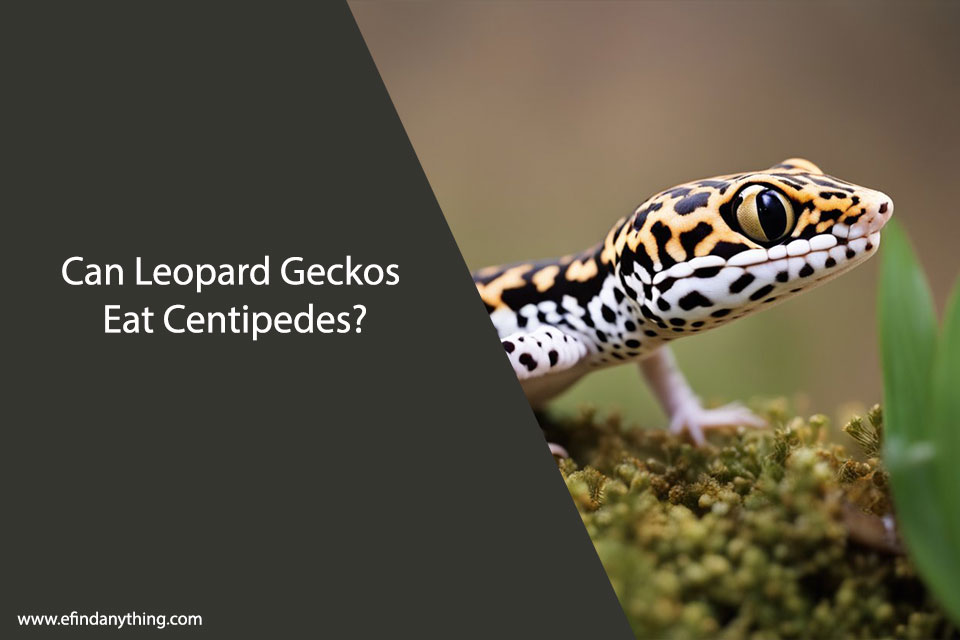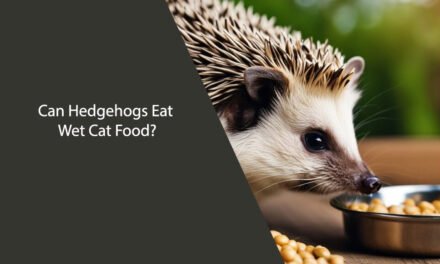Leopard geckos are popular pets known for their docile nature and easy care requirements. As with any pet, it’s important to provide a balanced and appropriate diet to ensure their health and wellbeing. While crickets and mealworms are commonly fed to leopard geckos, some owners may wonder if they can also feed their geckos centipedes.
Centipedes are arthropods that are known for their many legs and venomous bite. While some species of centipedes are harmless, others can be dangerous to humans and animals alike. As such, it’s important to know if leopard geckos can safely consume centipedes as part of their diet. In this article, we’ll explore whether or not leopard geckos can eat centipedes, and if so, what precautions should be taken to ensure their safety.
Table of Contents
Leopard Gecko Dietary Basics
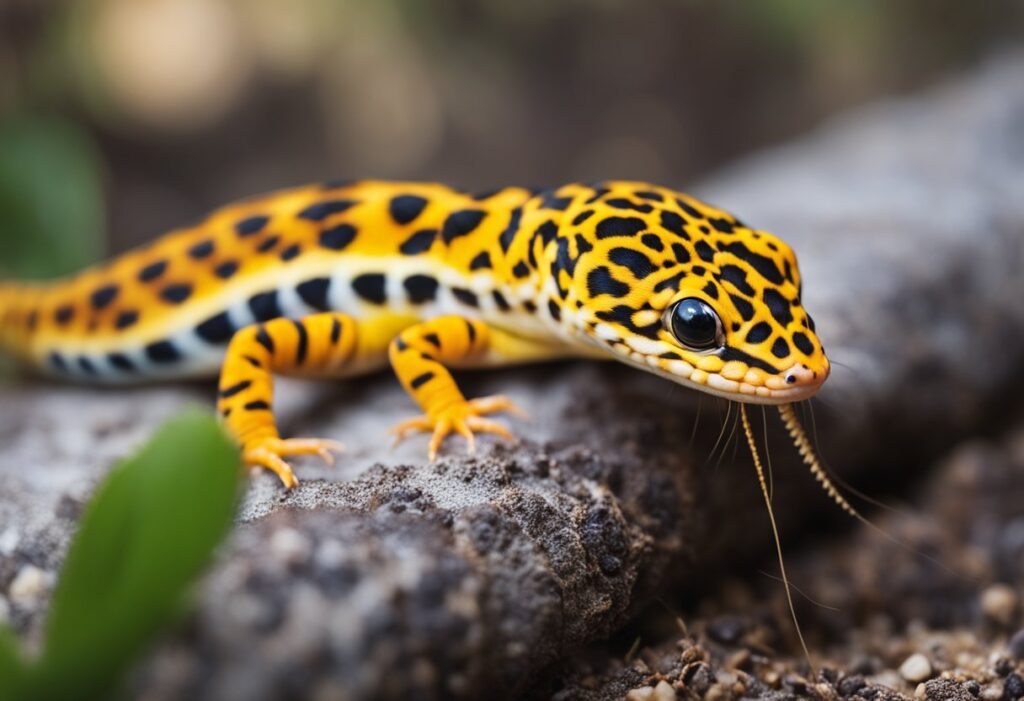
Leopard geckos are insectivores, which means that their diet consists mainly of insects. In the wild, they eat a variety of insects, such as crickets, mealworms, and waxworms. However, in captivity, their diet can be supplemented with other insects, such as roaches, superworms, and silkworms.
Nutritional Requirements
Leopard geckos require a balanced diet to maintain good health. They need a diet that is high in protein, low in fat, and rich in vitamins and minerals. Calcium is particularly important for leopard geckos, as it helps to maintain strong bones and prevent metabolic bone disease.
It is important to ensure that the insects fed to leopard geckos are gut-loaded, which means that they are fed a nutritious diet before being fed to the geckos. This ensures that the geckos receive all the necessary nutrients from their food.
Common Prey for Leopard Geckos
Leopard geckos are known to eat a variety of insects, but some are more commonly fed to them than others. The following is a list of some of the most common prey items for leopard geckos:
- Crickets: These are a staple food for leopard geckos and are readily available at most pet stores. They are high in protein and can be gut-loaded to provide additional nutrients.
- Mealworms: These are another common food for leopard geckos. They are high in protein and can be fed live or dried.
- Waxworms: These are a high-fat food that should be fed sparingly as a treat. They are not a good staple food for leopard geckos.
- Roaches: These are a nutritious food for leopard geckos and are becoming more popular as a feeder insect. They are high in protein and low in fat.
- Superworms: These are another popular food for leopard geckos. They are high in protein and can be fed live or dried.
In conclusion, leopard geckos require a balanced diet that is high in protein, low in fat, and rich in vitamins and minerals. Their diet should consist mainly of gut-loaded insects, and calcium supplementation is important to maintain strong bones. Crickets, mealworms, and roaches are some of the most common prey items for leopard geckos.
Understanding Centipedes
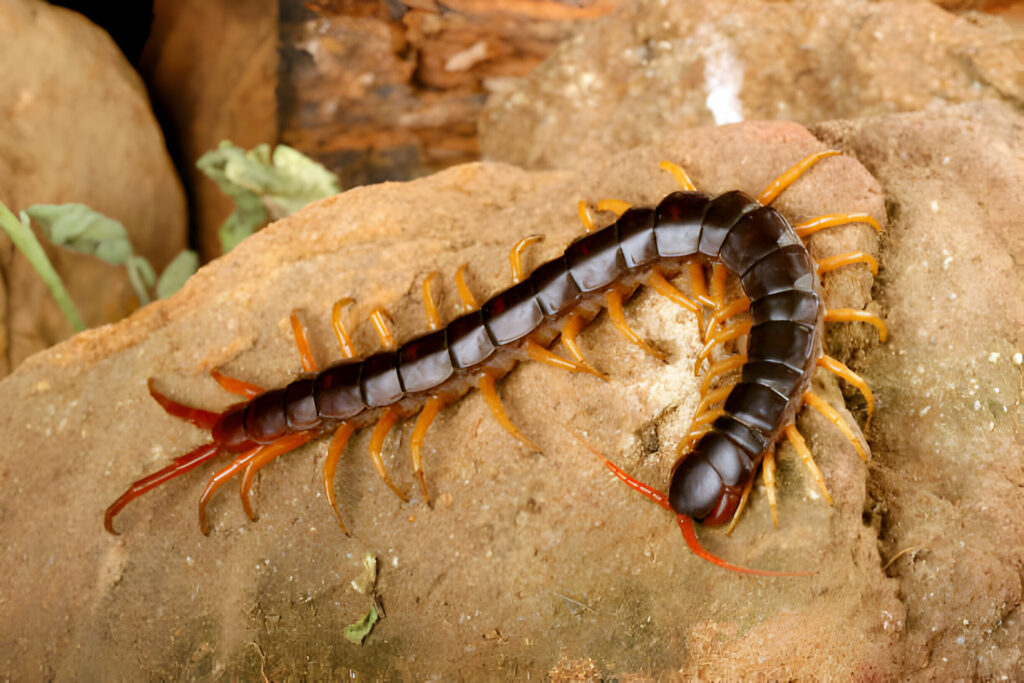
Centipedes are arthropods that belong to the class Chilopoda. They are found in various parts of the world, including North America, Europe, and Asia. Centipedes are elongated, flattened creatures with numerous legs. They can range in size from a few millimeters to over 30 centimeters in length.
Centipede Nutritional Profile
Centipedes are carnivorous and feed on insects, spiders, and other small invertebrates. They have a venomous bite that they use to subdue their prey. Centipedes are rich in protein and low in fat, making them a potentially nutritious food source for some animals.
However, it is important to note that centipedes may not provide all the necessary nutrients that some animals require. For example, they are low in calcium, which is essential for the development of strong bones. Therefore, it is important to ensure that any animal that consumes centipedes has access to a balanced diet that includes all the necessary nutrients.
Potential Risks of Centipedes
While centipedes may be a potential source of nutrition for some animals, they can also pose a risk. Centipedes have a venomous bite that can cause pain, swelling, and other symptoms in humans and animals. In some cases, the venom can be deadly.
In addition, centipedes may carry parasites or other pathogens that can cause illness in animals. Therefore, it is important to ensure that any centipedes that are fed to animals are from a safe and reliable source.
Overall, while centipedes may be a potential food source for some animals, it is important to weigh the potential nutritional benefits against the risks. It is also important to ensure that any animal that consumes centipedes has access to a balanced diet that includes all the necessary nutrients.
Feeding Leopard Geckos Centipedes
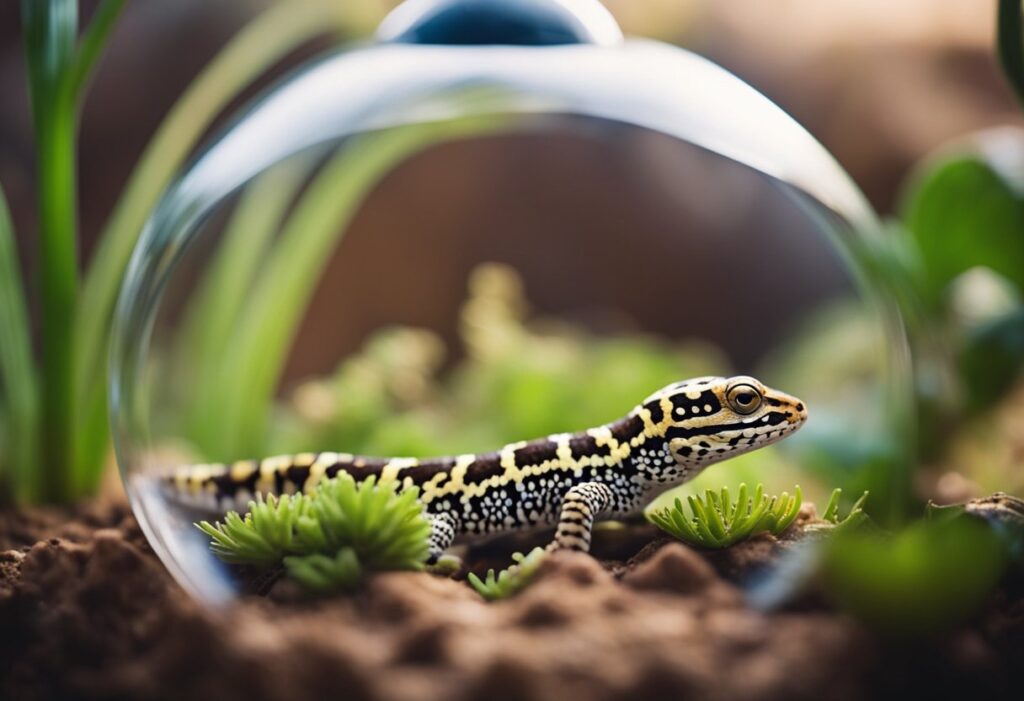
Pros and Cons
When it comes to feeding leopard geckos, there are many options available, including centipedes. While centipedes can be a nutritious addition to a leopard gecko’s diet, there are also potential risks to be aware of.
One potential benefit of feeding centipedes to leopard geckos is that they are a good source of protein. Additionally, they can provide a variety of nutrients that may not be present in other foods. However, it is important to note that not all centipedes are safe for leopard geckos to consume.
One potential risk of feeding centipedes to leopard geckos is that they can be difficult to digest. This can lead to digestive issues, including impaction. Additionally, some centipedes may contain toxins that can be harmful to leopard geckos.
How to Feed Centipedes Safely
If you decide to feed centipedes to your leopard gecko, it is important to do so safely. Here are some tips to keep in mind:
- Only feed centipedes that are safe for leopard geckos to consume. Avoid feeding wild-caught centipedes, as they may contain toxins or parasites.
- Always supervise your leopard gecko while they are eating. This can help you identify any potential issues, such as difficulty digesting the centipede.
- Consider feeding centipedes in moderation, and in combination with other foods. This can help ensure that your leopard gecko is getting a balanced diet.
- If you notice any signs of digestive issues or other health problems after feeding your leopard gecko centipedes, contact a veterinarian immediately.
In summary, while centipedes can be a nutritious addition to a leopard gecko’s diet, there are also potential risks to be aware of. By following these tips and feeding centipedes safely, you can help ensure that your leopard gecko stays healthy and happy.
Alternative Food Sources for Leopard Geckos
As responsible pet owners, we always want to make sure our leopard geckos are getting the proper nutrition they need to stay healthy. While their primary diet consists of insects such as crickets, mealworms, and dubia roaches, there are alternative food sources that can be added to their diet to provide variety and additional nutrients.
One alternative food source for leopard geckos is waxworms. These soft-bodied larvae of wax moths are high in fat and can be fed as a treat or to help a gecko gain weight. However, they should not be fed as a staple food source as they lack the necessary nutrients that a gecko needs for optimal health.
Another alternative food source is superworms. These larger worms are high in protein and can be fed to adult leopard geckos. However, they should be fed in moderation as they also have a high fat content.
Silkworms are another option for leopard geckos. They are high in protein and calcium, making them a nutritious addition to a gecko’s diet. However, they can be more expensive and harder to find than other insects.
It is important to note that leopard geckos should not be fed wild-caught insects as they may carry parasites or pesticides. All insects should be gut-loaded before feeding to ensure they are providing the necessary nutrients to the gecko.
In conclusion, while leopard geckos primarily eat insects such as crickets, mealworms, and dubia roaches, there are alternative food sources that can provide variety and additional nutrients to their diet. Waxworms, superworms, and silkworms are some options to consider, but it is important to feed them in moderation and ensure they are gut-loaded before feeding.
Monitoring Your Leopard Gecko’s Health
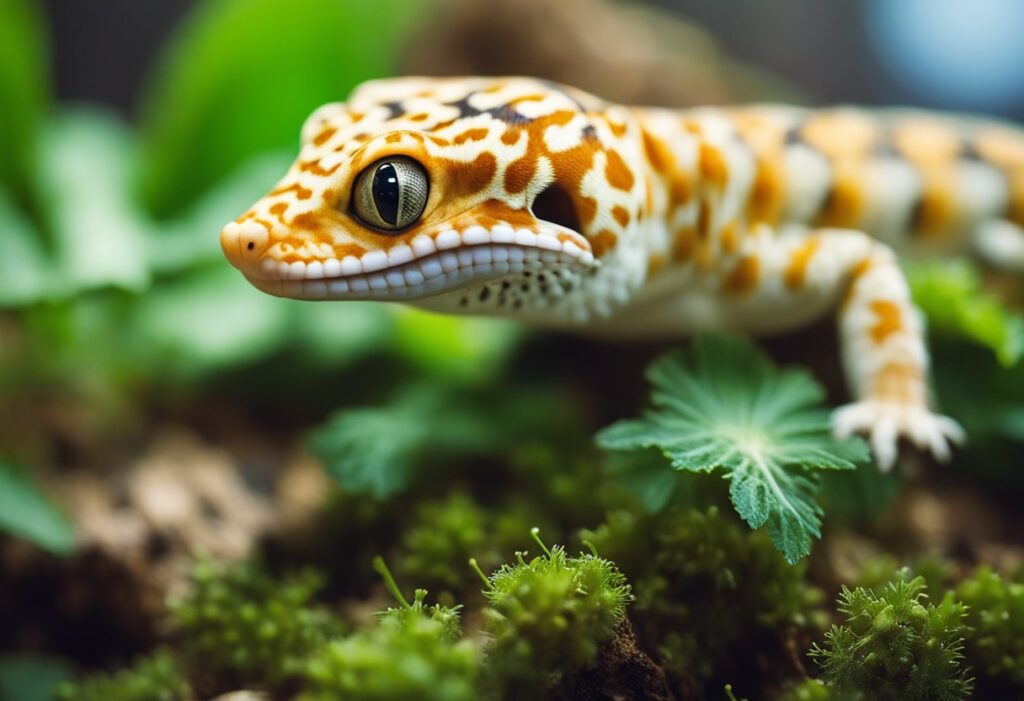
As responsible pet owners, we need to monitor our leopard gecko’s health on a regular basis. Here are some tips to help you keep your pet healthy:
Regular Check-Ups
It is important to take your leopard gecko to a reptile veterinarian for a check-up at least once a year. During the check-up, the vet will examine your gecko for any signs of illness or disease. They may also recommend some tests to ensure your pet is healthy.
Observation
Observing your leopard gecko on a daily basis is crucial to detecting any changes in behavior or appearance. Keep an eye out for any signs of lethargy, loss of appetite, or abnormal feces. If you notice any of these changes, it may be a sign that your gecko is not feeling well.
Proper Nutrition
Feeding your leopard gecko a balanced diet is essential for their health. Make sure you are providing them with a variety of insects, such as crickets and mealworms, as well as fresh vegetables. Avoid feeding your gecko any toxic or dangerous foods, such as centipedes.
Hydration
Leopard geckos require a source of clean water at all times. Make sure their water dish is filled with fresh water daily. You can also mist their enclosure to provide them with additional hydration.
By following these tips, we can ensure that our leopard geckos are healthy and happy pets.
Frequently Asked Questions
Is it safe for leopard geckos to consume centipedes?
While leopard geckos are known to eat a variety of insects, including centipedes, it is important to note that not all insects are safe for them to consume. Centipedes are known to have a venomous bite, which can be harmful to leopard geckos. Therefore, we do not recommend feeding centipedes to your leopard gecko.
What are the potential risks of feeding centipedes to leopard geckos?
Feeding centipedes to leopard geckos can pose several risks, including the risk of injury or death due to the centipede’s venomous bite. Additionally, centipedes may carry parasites or diseases that can be harmful to leopard geckos.
Can leopard geckos eat insects that are commonly found in households?
Leopard geckos can eat a variety of insects, including those commonly found in households such as crickets, mealworms, and waxworms. However, it is important to ensure that the insects are properly gut-loaded and dusted with calcium and other necessary supplements before feeding them to your leopard gecko.
What is the natural diet of a leopard gecko in the wild?
In the wild, leopard geckos primarily feed on insects such as crickets, roaches, and grasshoppers. They may also consume small lizards and other invertebrates.
Are there any insects that leopard geckos should avoid eating?
Leopard geckos should avoid eating insects that are too large or too hard for them to digest, such as beetles or large moths. They should also avoid insects that are toxic or have a hard exoskeleton, such as fireflies.
How does the diet of a captive leopard gecko differ from that of one in the wild?
In captivity, leopard geckos may have a more limited diet than those in the wild. They may also be fed a diet that is higher in fat and lower in fiber than their natural diet. It is important to provide a varied diet that includes a variety of insects and supplements to ensure that your leopard gecko receives all the necessary nutrients.

